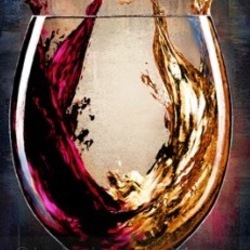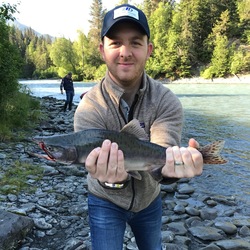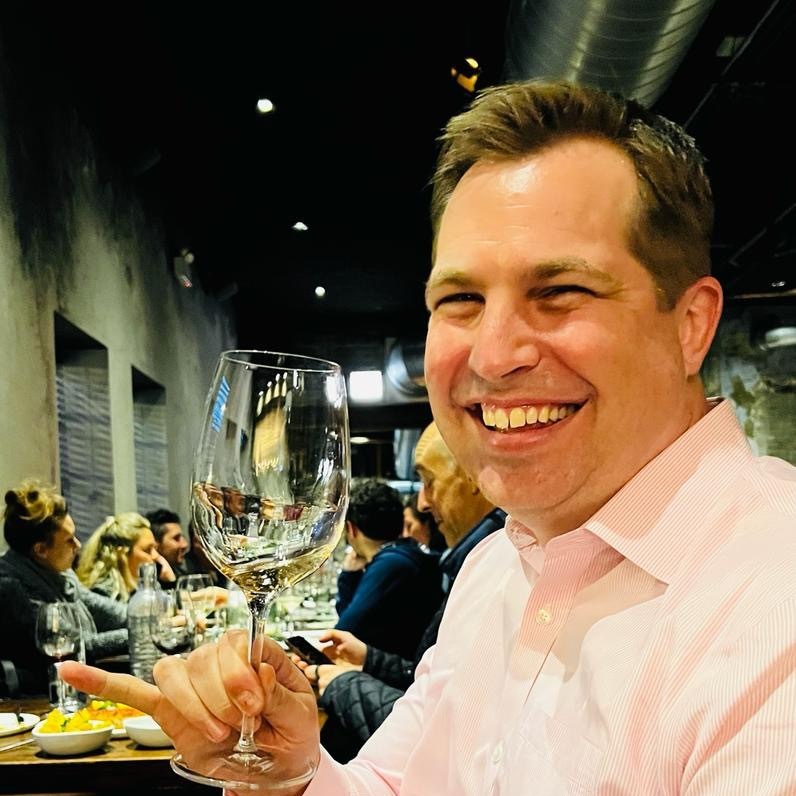Middle Brow Wine Co.
Grounded Wine Co.
Steady State Napa Valley Red Blend 2015
The Steady State Red Wine Napa Valley 2015 is a Bordeaux-style blend made with 73% Cabernet Sauvignon grapes, 8% Malbec, 7% Cabernet Franc, 6% Merlot and 6% Petit Verdot.
Steady State is very dark and smells that way. Black berries, currant, anise and a trace of tar on the nose paint it, black. The palate is fruity, but serious, with a savory stripe cutting through the middle just barely on the tart side. Acidity is bright and the tannins are moderate, so it's drinkable as well as pairable. — 8 years ago
Intrinsic Wine Co.
Columbia Valley Cabernet Sauvignon 2016
Mild aroma of plums. Initial raspberry dryness with a ever so slight sweetness in the middle and a delicate finish. — 8 years ago
Rock Wall Wine Co.
Stagecoach Vineyard Zinfandel 2012
Love Kent Rosenblum’s zins. This one is fantastic especially in the middle of winter with a tri-tip and shrimp dinner. — 8 years ago
Sleight Of Hand Cellars
The Magician Evergreen Vineyard Riesling 2015
The 2015 Magician is 100% Riesling from Evergreen Vineyard, located high on the cliffs high above the Columbia River in the middle of Washington State. On the nose; nice tropicals, green apple, pear, lemon, lime, a little white pepper and fresh yellow florals. On the palate, fresh, bright fruits of; green apple, lemon, lime, pineapple, green melon and guava. Spring florals, saline, chalky minerals, nice round acidity and beautiful, slightly oily, round finish. Photos of; their tasting bar, Trey Busch - Co-owner/Winemaker and old Jukebox in their tasting room. Producer/Owner notes...A Pearl Jam concert is one of the reasons Trey ended up in the Pacific NW after seeing them in his first concert ever in Atlanta. In 1992, Trey moved to the Pacific Northwest. He got a job at Nordstrom and worked there for 8 years. Trey was then offered the chance to get into the wine business with the Dunham Cellars. Eric Dunham, the winemaker and owner of Dunham Cellars help shape Trey for his career in winemaking. Trey got hooked on winemaking after his first crush at Dunham Cellars where he stayed until starting "Sleight of Hand Cellars" in 2007. — 8 years ago
Vinifera Wine Co.
The Pier Paso Robles Zinfandel 2012
Aromas of plums and raspberries. Peppery and jammy with a burst to the roof of your mouth plum dryness in the middle. Soft jammy finish. — 9 years ago
New Glarus Brewing Co.
Oud Bruin
GIANT mouth for style. Great malt, with a perfect kiss of sour right in the middle. — 9 years ago

Clos du Val Wine Co.
Napa Valley Cabernet Sauvignon 2013
Middle of the road — 10 years ago
La Jota Vineyard Co.
Howell Mountain Merlot 2014
First Disney wine. Starts off black and blue but then gets more red fruited as it opens. This is a baby. We are lobbying to have a bottle opened tonight to enjoy tomorrow. This wine has a great toasted oak tannin finish. Middle has medium+ density weight. Really nice bottle. Will be a 94 in 5 years but solid 92-93 now. Can't imagine what the WS Keyes Merlot tastes like! — 7 years ago
Pride Mountain Vineyards
Premiere Napa Valley Cabernet Sauvignon 2009
In one word: excellent. This was enjoyed tonight on the eve of ID4. Not sure what I was expecting, but it certainly wasn't this. I'm a fan of Pride, but I don't think I've ever had a wine from Pride quite like this. From Pride: "This year, I decided to pay homage to Brother and Sister Co-Owners Steve Pride and Suzanne Pride Bryan by drawing from the two vineyard blocks that produce our very best Cabernet Sauvignon, our Rock Arch vineyard, which forms the core of our Reserve Cabernet Sauvignon, and our Rim Rock vineyard, used for our uber-limited-production Vintner’s Select Cabernet Sauvignon. " And oh mama what a treat. This wine is blackberry, black cherry, sweeter cinnamon spice on the nose. The palate is black licorice, black cherry, ripe black fruits, hint of baking spice, grilled meat. The middle of this wine shows off the full bodied blackberry and aged black cherry core. Power and finesse together. Almost a sweeter middle that has you grabbing the bottle and verifying that this indeed is an 09. NO SIGN of decline. Finish with some acidity, but tannin has resolved and this wine is singing on the finish. I know I've had a wine with more expressive fruit, but I don't think I've ever had a wine that was so intricate yet powerful. Wow. — 7 years ago

Hakutsuru Sake Brewing Co.
Sayuri Nigori Sake
Cantaloupe and Asian pear to open, soft hints of tomato in the middle, easy finish with some a touch wet limestone minerality. Very surprised at the range of flavors. — 8 years ago
Union Horse Distilling Co.
Legacy Series Small Batch Reserve Straight Bourbon Whiskey
Great tasting bourbon from a local distillery in Lenexa, Kansas. Spicy notes at first sip with a "creamy" middle and strong citrus hints in the end. Easily one of the most satisfying and complex bourbons I've enjoyed. — 8 years ago
Bedrock Wine Co.
Ode to Lucien Mourvedre Blend 2013
Ripe fruit up front then briary earthy middle dusty tannin end delightful complexity — 8 years ago
Bale Breaker Brewing Co.
Top Cutter India Pale Ale
Typical northwest IPA but very well done. Obviously they have the best selection of hops available given that the brewery is literally in the middle of their own hop fields. The beer has good citrusy and somewhat grassy hop nose and sweet malt. On he palate, it is well balanced with hop bitterness and slightly sweet and lightly biscuity malt. Very local, so this is an easy go-to beer for me. — 9 years ago
Samsara Wine Co.
Melville Vineyard Pinot Noir 2013
Backstory: Tasted this at the winery and loved it so much that we bought a bottle to take along with us to Mexico. Chad Melville is the owner and winemaker at Samsara. He's also the chief winegrower at Melville Winery.
Winemaking Process: Single vineyard wine with grapes harvested from the Cargasacchi vineyard, which is in the middle aka sweet spot of Santa Rital Hills. 75% whole cluster fermentation with native yeast. 50% in new French oak barrels for 22 months, followed by 12-month ageing in the bottle. Unfiltered.
Tasting Notes: Colour is ruby red with some clarity, no sediment. On the nose, it has blue fruit, cherry, cassis, cigar, asphalt, lambskin leather and pronounced earthy notes. On the palate, it is medium-bodied with full, mouth-filling texture. Red fruit notes appear first, and then the taste turns into an earthy, allspice notes, and finishes off with something so bright and refreshing that reminds us of orange peel. The tannins are soft. End palate is long, around 10 seconds, marked by minerality and cherry. I love this wine because unlike many Pinot Noir from Santa Barbara, it isn't over extracted and not too sweet (like fruit pastille). There's a fleeting burst of sweet red fruit flavour on the mid palate and the flavour quickly transits to earthy notes and tannins. It's a more earthy Pinot Noir but yet still elegant and ready to be consumed. At $55, I think it's well worth the price. — 9 years ago
Dirty & Rowdy
Unfamiliar Mourvedre 2017
Via Brooklyn Wine Exchange: Hardy Wallace is a bit of a superstar in the "New California" wine scene. He began his wine career in Atlanta, publishing a blog on the subject called Dirty South Wines. In 2009, he won a high-profile contest held by Murphy-Goode Winery in Sonoma, called "A Really Goode Job." Hardy beat out 2,000 other applicants for this stunt-job, acting as a sort of social media/pr coordinator for the winery. Upon completion of his six-month contract, he went to work for several legendary winemakers in the valley, including Cathy Corison (Chappellet, Corison) and Ehren Jordan (Turley, Failla). During this time, Hardy and his wife Kate also partnered with friends Matt and Amy Richardson to form a small label called Dirty & Rowdy Family Winery. For their first vintage, they purchased one ton of Mourvredre, the semi-obscure Provencal and Spanish variety that is rarely seen outside the context of a red blend in California.
Knowing that Dirty & Rowdy could distinguish itself in a ocean of Napa Valley Cabernet Sauvigon with this curious and brawny grape, Hardy & Co. quickly bet the farm on Mourvedre, as a vehicle to express different styles of winemaking as well as the terroir of multiple regions within California. Flash-forward to current day, where Dirty & Rowdy has become the king of California Mourvedre, bottling multiple cuvees each year that sell out almost immediately.
Dirty & Rowdy is a well-known emblem of the domestic natural wine scene as well. Hardy buys almost exclusively from organic growers, and doesn't filter, acidify, or alter his wines in anyway. Sulfur use is extremely low, and the overall philosophy is to be as hands-off as possible.
That is until 2017. The fact that Dirty & Rowdy has a wine to present at all for this vintage is a miracle. Flashback to mid-July last year. The growing season wasn't going all that well. Tremendous heat spikes created growth problems at almost all the vineyards Hardy sources grapes from. It's hard enough to monitor vine issues on one vineyard, let alone almost a dozen parcles scattered around six counties stretching from the Central Coast all the way out to the Sierra Foothills. A case of shingles went from bad to worse, spreading to his eyes. Hardy completely lost his vision for three days. Kate's brother Angus, a ski instructor and artist from Aspen, drove out to lend a hand with the impending harvest. On his way out, he was involved in single-car crash along a treacherous stretch of interstate and tragically lost his life.
Then the fires started.
Hardy and Kate, like many other producers who make wines in communal "crush" facilities located in urban areas around Sonoma and Napa, had hoped to ride out the fires and continue their wine production. The fires spread rapidly and threatened both their house and their winery, located in Petaluma. They left their wine in the midst of alcoholic fermentation, one of the most crucial and stressful times of the year for a winemaker even in the best of situations. When they were able to return eight days later, the winery was luckily undamaged. The wine, however, didn't fare so well. most vats had experienced "stuck fermentation," meaning that the native yeast died before eating all the sugar. Hardy, like most forward-thinking American winemakers, is a firm believer in natural fermentation. This no-brainer aspect to his wine was now an virtual impossibility. Plus, the vats contained high levels of volatile acidity or "VA," which creates an unfavorable "nail polish" quality in wine. A little bit of VA can give lift and energy to wine. Too much, however, renders the wine undrinkable.
At this point, Hardy thought to sell all the wine off in bulk for pennies on the dollar. Or perhaps create a second label to distance himself from what was surely going to be an atypical wine. Instead, he decided to combine almost every vat of his Mourvedre for the vintage (including lots of his most expensive fruit), and go into the "Unfamliar" territory of interventionist winemaker. Stuck lots were restarted using a variety of methods. When the wines finally fermented to dryness, he borrowed a "reverse osmosis" filtration system, perhaps the most modern of all the modern wine doohickeys. This contraption allowed Hardy to literally suck out the volatile acidity to bring it down to a pleasing level, as well as moderate and stabilize the alcohol. Then he filtered the wine. Basically, he did all the things he never thought he would ever want to do to wine.
The resulting wine is something that we have never seen before, both from Dirty & Rowdy and the Mourvedre grape, in general. Much of the wine fermented carbonically in tank, so the expression is much closer in style to Beaujolais than Bandol. It is so light on its feet, in fact, that Hardy believes this wine could take a serious chill. (Hence the reason we are trying to get you to try a California Mourvedre in the middle of a sweltering summer!) The tannins are pretty much non-existent, and the fruit is pretty and pure. There is a lovely little purple flower note in the middle of the wine, and a hint of smokiness on the finish (smoke taint from the fires? Or is this just some sort of phantom association because of the context? Either way, it adds depth and personality to this gorgeous wine.)
Since their "Annus Horribilis" of 2017, order and peace has been restored in Hardy & Kate's life. Their daughter Maple turns two in a few days. They celebrated the free-spirited life of their brother with scores of his friends and ski students at Aspen Mountain's opening day last November. The motto of the celebration, "Live Like Angus," has inspired hundreds and hundreds of beautiful social media posts. And this year's Spring release of Dirty & Rowdy wines from earlier vintages has quickly sold out around the country, gobbled up by ravenous collectors, restaurants, and retailers (like this one.)
But to Hardy, this "Unfamiliar" wine, which doesn't fit stylistically or financially into the rest of the D&R portfolio, will always represent something completely different: The best of a unthinkably bad situation. "It took a lot of blood, sweat, and tears to get that wine into bottle," Hardy wrote to us, just this morning. "Fortunately, it is fresh, delicious, soulful and somewhat of a Phoenix Rising from 2017. Though it is our least expensive wine ever, it is the wine I am most proud of." — 7 years ago
Middle Brow Beer Company
Middle Brow Curriculum Vitae
Middle brow curriculum vitae. Interesting, but disjointed. I felt I could taste wine, blueberries and a saison, but not very integrated. — 9 years ago
Bedrock Wine Co.
Nervo Ranch Heritage Alexander Valley Red Blend 2014
The label says "claret style", but we're thinking it drinks more like an Italian style blend. Lots of ancient vine Zin flavors and 14.5% alcohol. We enjoyed it with Middle Eastern food. — 9 years ago
Rock Wall Wine Co.
Jesse's Vineyard Zinfandel 2012
So so Zin. Middle of the road — 9 years ago
Otra Piel
Gen Fuerza Tranquila Gualtallary Suelo Cabernet Franc Blend 2014
Whole cluster co-ferment in amphora buried in the middle of their vineyard. A seriously cool wine. — 10 years ago












Tom Kobylarz
One of the absolute best white wines I’ve had so far this year to date was this extraordinary Grand Cru Chablis from 2006. I think we caught this wine at the absolute perfect time to drink. Grenouilles is French for frog, more on that below.
•
The color on this was perfect, a vibrant light gold and yellow, watery at the rim. The nose was also in perfect condition, notes of flint, crushed oyster shell, a touch of smoke, allied with fresh Asian pear and crisp Fuji apple. The wind absolutely jumped out of the glass, the nose was so pronounced. The palage took it another level up with a perfect expression of what the nose was giving, all the while wrapped up in a perfect medium bodied majorly dense and complex wine. Medium plus acidity and very long on the finish.
•
Formed in 1923, la Chablisienne is a co-op winery based of course in Chablis. As I have gone deeper into the rabbit hole of wine I tend to find these amazing co-ops which I wish I could have known about earlier as the wines are so impeccably good and priced so reasonably well. They produce something like 30 different wines off from the Chardonnay grape and all from vineyards within the AOC borders of Chablis.
•
The Grenouilles climat is the smallest of the 7 Chablis Grand Cru climat at 9.38 hectares. It has soils that consist of upper and middle layers of Kimmeridgian, alternating with limestone and marl that are studded with fossilised seashells.
•
The first vines to grow at the bottom of this hill were close to the River Serein and frogs no doubt came to keep the winegrowers company. — 6 years ago